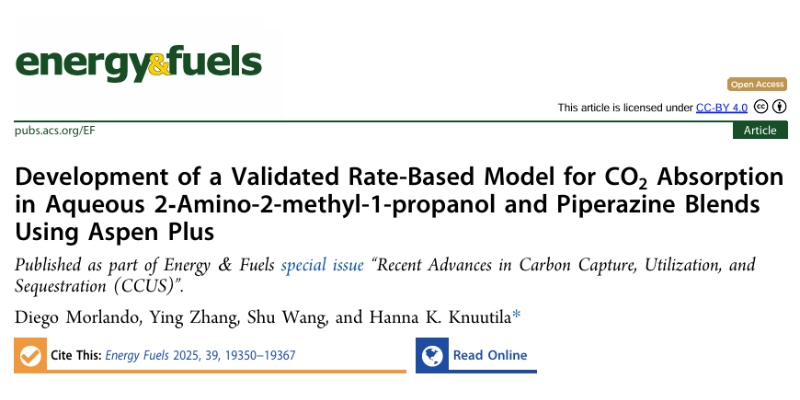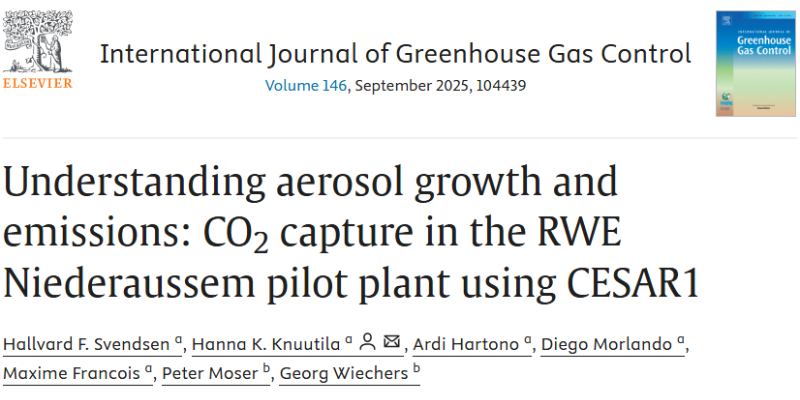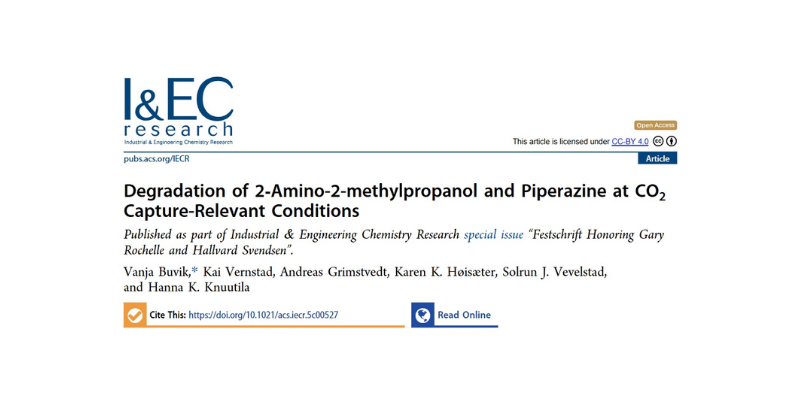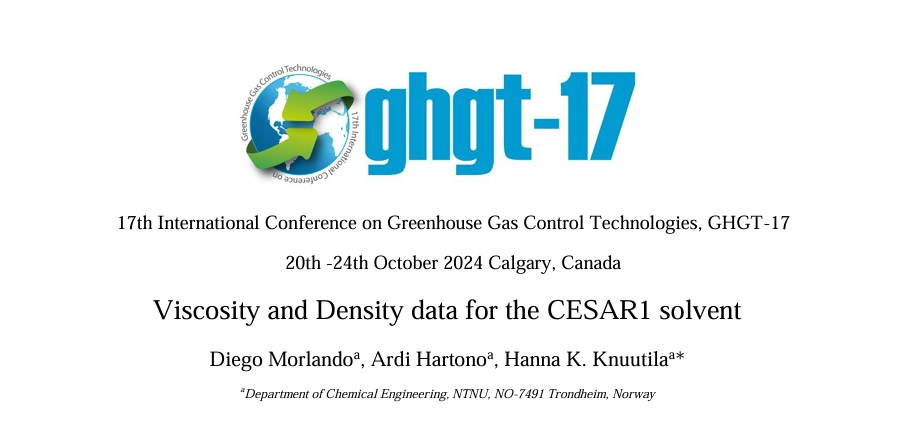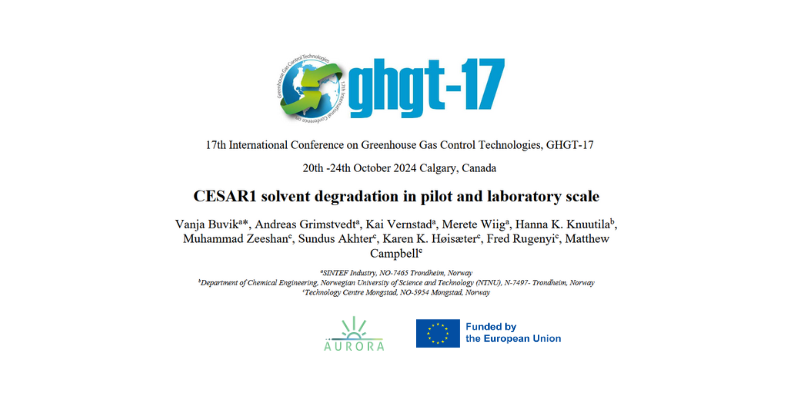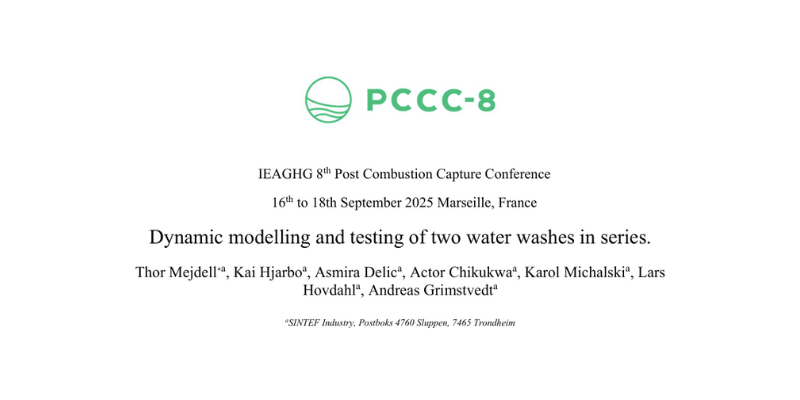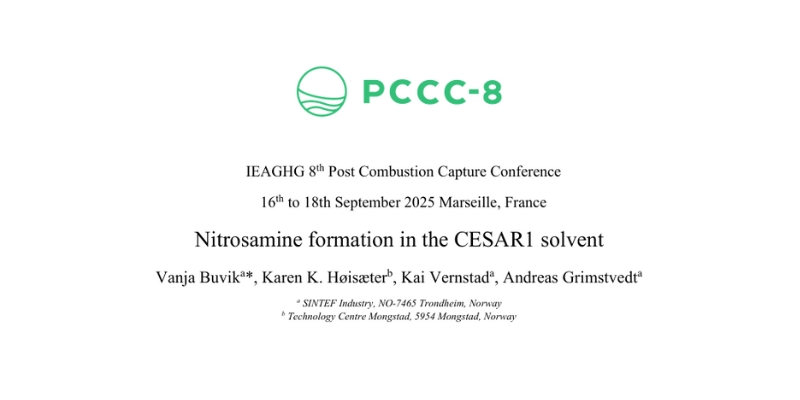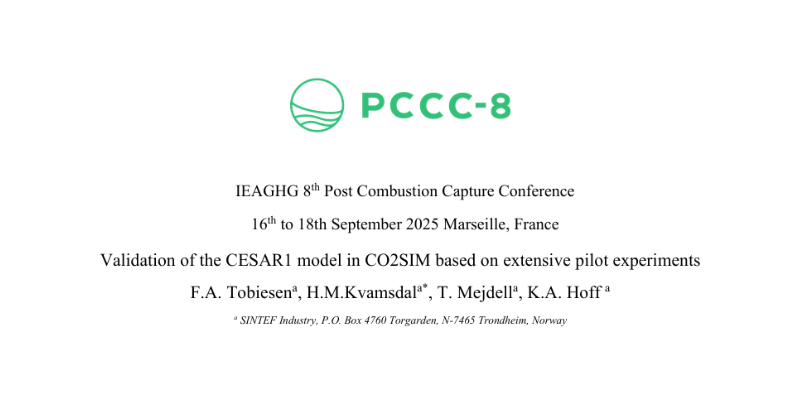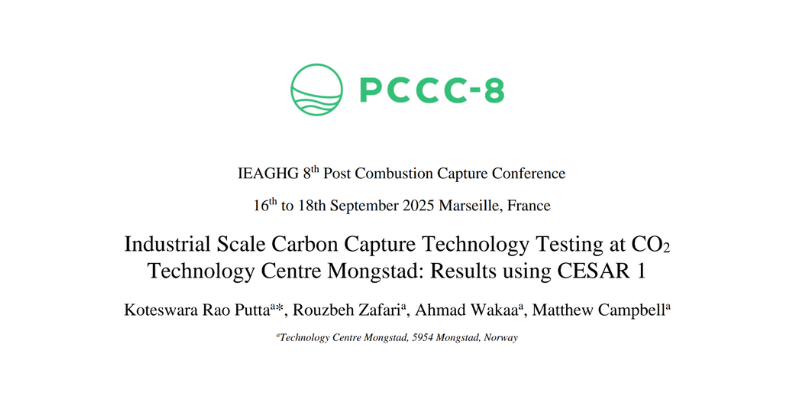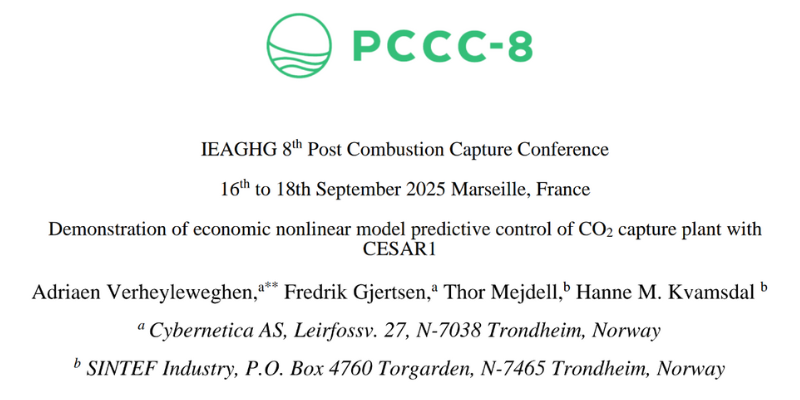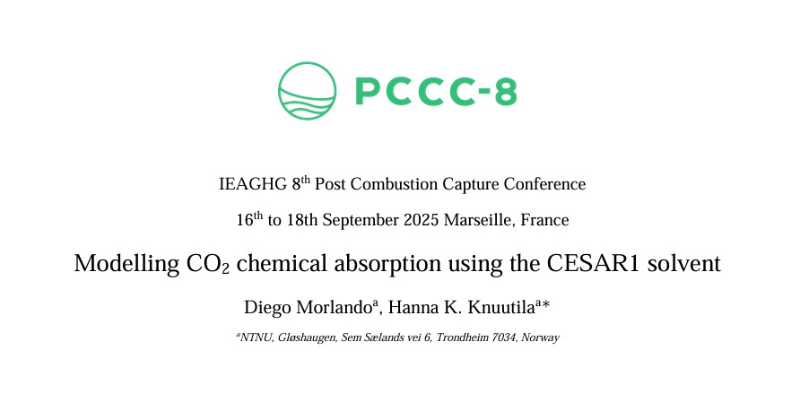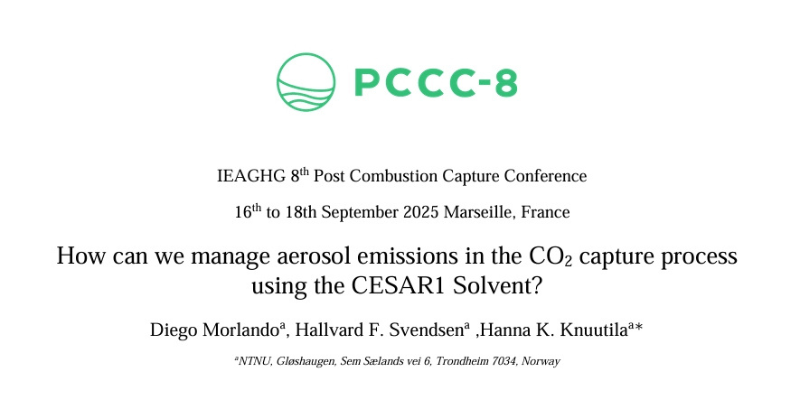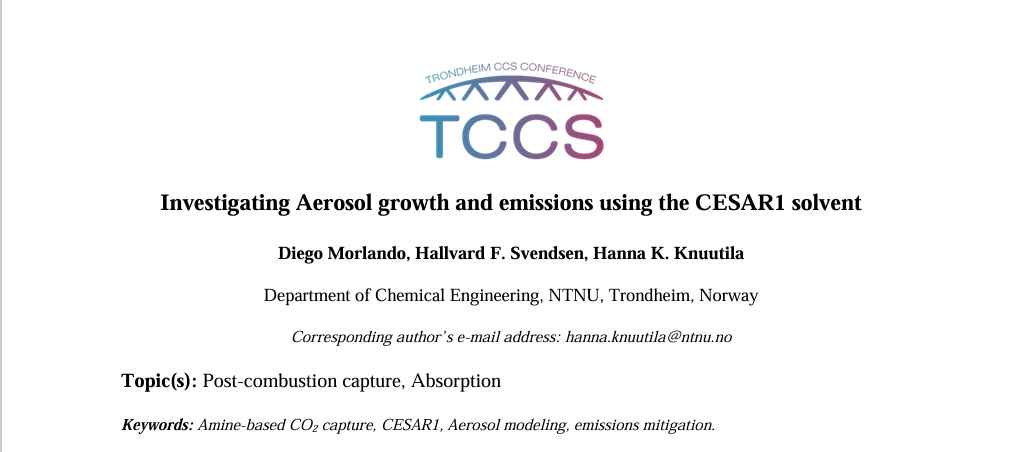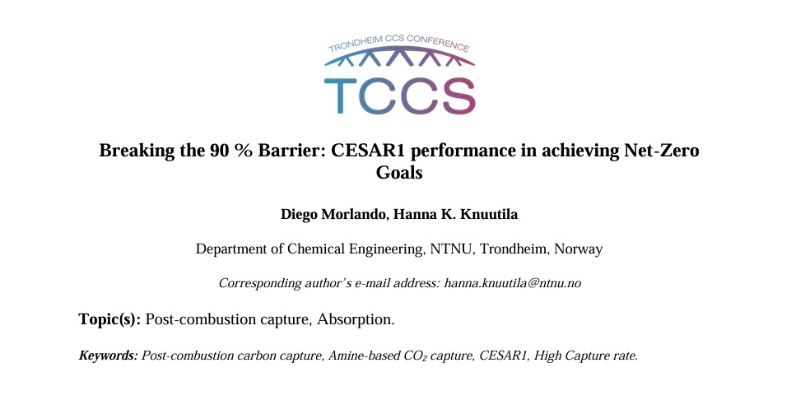Read about advanced carbon capture solutions
Innovative Research in CCUS Technology
Discover our extensive collection of research papers that delve into the intricacies of carbon capture technology.
Academic and Scientific Publications
AURORA Insights and Findings
Read our detailed articles that discuss the progress and milestones achieved by the AURORA project. These articles highlight the collaborative efforts and innovative solutions developed by our consortium of 12 partners.
Journal Publications
Publication – Development of a Validated Rate-Based Model
Abstract In this work, we developed a new e-NRTL thermodynamic framework for CO2 absorption in aqueous mixtures of 2-amino-2-methyl-1-propanol (AMP) and piperazine (PZ) in Aspen Plus. The e-NRTL AMP/PZ/H2O/CO2 model was fitted on experimental data covering a range of AMP concentration from 12 to 48 mass % and PZ concentration…
Publication – Pilot-scale CO2 capture in a cement plant with CESAR1
Abstract Carbon capture from hard-to-abate industries is essential. This study investigates the effect of stripper pressure on the performance of amine-based CO2 capture from cement flue gas, using the CESAR1 solvent. Through a rigorous data filtering and binning methodology, experimental results were systematically categorized, enabling a precise evaluation of how…
New Publication: Aerosol Modeling in CO2 absorption using CESAR1
We are proud to announce that Hallvard F. Svendsen, Hanna K. Knuutila, Ardi Hartono, Maxime Francois and Diego Morlando at NTNU, together with external collaborators Peter Moser (RWE) and Georg Wiechers (RWE) have published a new article presenting results from the AURORA and SCOPE projects.The publication introduces a new class-based…
Thermodynamic Properties of CO₂ Absorption in CESAR1 — Essential Data for Better Process Modelling
We are proud to announce a new scientific publication from the AURORA project, authored by Diego Morlando, Ardi Hartono and Hanna K. Knuutila, published in Carbon Capture Science & Technology. This important work provides extensive experimental data on the thermodynamic properties of CESAR1, a key solvent blend for industrial carbon…
Journal Publication – In-Depth Study of CESAR1 Solvent Degradation Under CO₂ Capture Conditions
A new scientific publication based on research from the AURORA project has just been released in the journal Industrial & Engineering Chemistry Research. This study delivers an in-depth analysis of the degradation behaviour of the CESAR1 solvent —a popular choice for solvent-based post-combustion CO₂ capture.This work, developed under the AURORA…
Conference publication – GHGT-17: Viscosity and Density data for the CESAR1 solvent
Abstract Global warming is a major issue that needs to be addressed and limited. The CESAR1 solvent blend has a high potential for becoming a commonly employed, commercial solvent system. In this work, the viscosity and density data for aqueous CO2 loaded CESAR1 (26.6 wt.% AMP 12.8 wt.% PZ) solution…
Conference publication – GHGT-17: “Storage potential evaluation of eastern Mediterranean area as final step of the full chainassessment”
The final step in capturing and storing carbon dioxide (CO₂) emissions is geological storage, where CO₂ is injected deep underground into carefully chosen locations. These locations could be natural formations like saline aquifers (underground reservoirs filled with salty water) or empty oil and gas fields.This work, part of the AURORA…
Understanding Solvent Degradation in CO₂ Capture – CESAR1 Solvent Degradation in Pilot and Laboratory Scale
The fight against climate change requires innovative solutions, and one promising method is CO₂ capture and storage (CCS). CCS involves capturing carbon dioxide from industrial emissions before it reaches the atmosphere. At the heart of this process are specialized chemical solvents, such as CESAR1, which absorb CO₂ from flue gases.While…
Turning Waste Into Opportunity: Thermal Reclamation Chemistry of Common Amine Solvents
CO2 capture technology is vital for reducing greenhouse gas emissions. But what happens when the chemicals used in this process wear out or degrade? Scientists have been studying how to rejuvenate these chemicals through a method called thermal reclaiming. This research focuses on ethanolamine (MEA), a widely used solvent for…
Closing Knowledge Gaps – Density and Viscosity of Unloaded and CO2-loaded Aqueous AMP-PZ blends
AURORA’s latest scientific journal publication provides experimental density and viscosity data on different unloaded and CO2-loaded aqueous blends of 2-amino-2-methyl-1-propanol (AMP) and piperazine (PZ) used for absorption-based CO2 capture. The paper also provides correlations for density and viscosity suitable for various modelling works.In our previous review article, we identified knowledge…
Conference Abstracts
Conference abstract – Dynamic modelling and testing of two water washes in series.
Abstract An amine-based CO2 capture plant may cause harmful emissions to the atmosphere, and it is important to measure and control the emissions of amines and products resulting from their degradation during the process. The present work is a part of the SCOPE and AURORA projects and presents modelling and…
Conference abstract – PCCC8: Nitrosamine formation in the CESAR1 solvent
Abstract The CESAR1 solvent is a non-proprietary blend of 2-amino-2-methylpropanol (AMP) and piperazine (PZ), that has been extensively studied as a good candidate for post-combustion CO2 capture. It offers lower energy demand, more flexibility of operation and higher chemical stability than the earlier benchmark solvent, 30wt% ethanolamine (aq.) 1. The…
Conference abstract – PCCC8: Validation of the CESAR1 model in CO2SIM based on extensive pilot experiments
Abstract The CESAR1 model in the CO2SIM simulator has been updated based on new laboratory experiments covering a broader loading and temperature range compared to previous reported data in the literature. The updated model has been validated and successfully improved by extensive testing at the Tiller pilot plant, which operated…
Conference abstract – PCCC8: Industrial Scale Carbon Capture Technology Testing at CO2 Technology Centre Mongstad: Results using CESAR1
Abstract Global CO2 emission trends show an increase in the total CO2 emissions, i.e. 36.8 Billion tons in 2022 [1], 37.4 Billion tons in 2023 [2] and in 2024 CO2 emissions are expected to be above 40 Billion tons [3]. Though clean energy deployment is increasing, it’s not yet at…
Conference abstract – PCCC8: Demonstration of economic nonlinear model predictive control of CO2 capture plant with CESAR1
Abstract A nonlinear model predictive control (NMPC) strategy is successfully demonstrated for the Tiller CO2Lab (SINTEF AS) aminebased post-combustion CO2 capture pilot using the CESAR1 solvent. The dynamic pilot plant model is validated against experimental results with good agreement. Building on previous experience with testing this type of controller, a…
Conference abstract – PCCC8: Modelling CO2 chemical absorption using the CESAR1 solvent
Abstract Reducing carbon dioxide (CO2) emissions is a significant global challenge in combating climate change. Chemical absorption using aqueous amine solution is the most mature technology for post-combustion carbon capture [1]. An aqueous blend of 3 M 2-amino-2-methyl-1-propanol (AMP) + 1.5 M piperazine (PZ), also known as CESAR1, is considered…
Conference abstract – PCCC8: Reboiler duties at ultra-high CO2 capture rates with MEA and CESAR1
Abstract Growing global temperatures and human population lead to a constant increase in energy demand (Smit et al., 2014). Even with the growing energy supply from renewable sources, consumption of fossil fuels is inevitable in the future (Khaleel et al., 2022). Therefore, we should focus on technologies tackling CO2 emissions…
Conference abstract – PCCC8: How can we manage aerosol emissions in the CO2 capture process using the CESAR1 Solvent?
Abstract Chemical absorption using a blend of 3 M 2-amino-2-methyl-1-propanol (AMP) and 1.5 M piperazine (PZ) has gained attention due to its low energy demand and high degradation resistance. However, solvent emissions remain one of the major challenges to its industrial-scale application. Solvent emissions, in particular amine aerosol emissions, need…
Conference abstract – TCCS-13: “Investigating Aerosol growth and emissions using the CESAR1 solvent”
Abstract CO2 capture using amine-based absorption is the most mature technology to decarbonize carbon intensive industries, Bui et al. (2018). Research has been focused on studying solvents that are stable, environmentally sustainable and energy efficient. The CESAR1 solvent, an aqueous blend of 3 M 2-amino-2-methyl-1-propanol (AMP) and 1.5 M piperazine…
Conference abstract – TCCS-13: “Breaking the 90 % Barrier: CESAR1 performance in achieving Net-Zero Goals”
Abstract CO2 capture plays a fundamental role in achieving the climate change goals set by the Paris Agreement 2015. Capturing 90% of the CO2 being emitted from industrial sources is not enough, (Brandl et al., 2021). There is a need to design, optimize and qualify technologies that achieve higher capture…
Previous Academic and Scientific Publications
Visit Our Library on CCUS Technologies and Processes
Academic publications
Scientific publications by AURORA partners prior to project commencement that are relevant for the project

Evaluation of process upgrades and novel solvents for the post combustion CO2 capture process in pilot-scale

Process modifications for solvent-based post-combustion CO2 capture

First Process Results and Operational Experience with CESAR1 Solvent at TCM with High Capture Rates (ALIGN-CCUS Project)

Towards full-scale carbon capture – Results from the Mobile Test Unit in various industry sectors

ALIGN-CCUS: the results of an ACT project on the full CCUS chain to accelerate implementation of decarbonisation in industrial areas

Process integration of advanced amine-based solvents in power and industrial plants: A new benchmark for post-combustion carbon capture?

Demonstration of a novel instrument for online monitoring of absorber emissions to air

Optimizing integrated reference cases in the OCTAVIUS project

Demonstration of two-level non-linear model predictive control of CO2 capture plants

Demonstration of non-linear model predictive control of post-combustion CO2 capture processes

Dynamic real-time optimisation of a CO2 capture facility

Demonstration of non-linear model predictive control for optimal flexible operation of a CO2 capture plant

Evaluating the possibility of high- pressure desorption of CO2 via volatile co-solvent injection

Strategic planning of regions and territories in Europe for low carbon energy and industry through CCUS: the STRATEGY CCUS project

Atmospheric emissions of amino-methyl-propanol, piperazine and their degradation products during the 2019-20 ALIGN-CCUS campaign at the Technology Centre Mongstad

Best practices for the measurement of 2-amino-2-methyl-1-propanol, piperazine and their degradation products in amine plant emissions.

Modelling and simulation of the Esbjerg pilot plant using the Cesar 1 solvent

Results from Cesar1 Testing at the CO2 Technology Centre Mongstad. Verification of Residual Fluid Catalytic Cracker (Rfcc) Baseline Results

Aerosol Growth in a Post Combustion CO2 Capture Absorber Using the 2-Amino-2-Methyl-1-Propanol/Piperazine (CESAR 1) Solvent

Development of Process Model of CESAR1 Solvent System and Validation with Large Pilot Data

CESAR1 Solvent Degradation and Thermal Reclaiming Results from TCM Testing

New solubility and heat of absorption data for CO2 in blends of 2-amino-2-methyl-1-propanol (AMP) and Piperazine (PZ) and a new eNRTL model representation

This project has received funding from the European Union’s HORIZON EUROPE research and innovation programme under grant agreement No 101096521.

